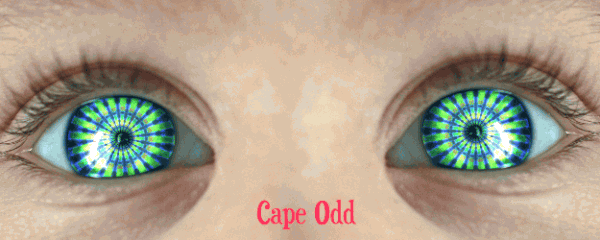

11 For children, adolescents and young adults, this may have a detrimental effect on their ability to complete academic activities. 10 Research has found that visual disorders may occur in up to 69% of patients following mild traumatic brain injuries. Differentiation of non-specific concussion symptoms from pre-existing conditions is a further confounder.Īs more than half of the brain’s pathways are dedicated to vision and eye movement control, a diffuse brain injury such as concussion will often affect the visual system. 9 This presents particular difficulties for general practitioners (GPs), who will often see patients at a time after the concussive event.

7,8 Accordingly, it has been reported that up to 90% of players may not be aware of a potential concussion diagnosis and go unassessed by health professionals.
#Seeing a kaleidoscope in eye professional
However, the use of these tests is often restricted to professional or semi-professional sporting events, where trained medical professionals are more readily available. The widely endorsed Sports Concussion Assessment Tool 5th Edition (SCAT5) and Concussion Recognition Tool (CRT) have shown high sensitivity and specificity in detecting concussion at the sports arena. 5 Despite previous misconceptions, concussion often does not involve the loss of consciousness, which is reported in <10% of cases. Additional early symptoms include headaches, difficulty concentrating on tasks, sensitivity to light and visual disturbances. Immediately following impact, the patient may have confusion, dizziness and amnesia. As such, signs and symptoms on presentation may be both complex and highly variable. 3 Optimal diagnosis and, where indicated, treatment is therefore essential to reduce the impact on either school, work or daily activities and subsequent quality of life. 1 Although most cases resolve spontaneously without medical intervention over a period of 7–10 days, a subset of patients will report ongoing symptoms. 2 The majority of traumatic brain injuries occur in patients aged 15–64 years during participation in sports. 1,2 The costs associated with hospitalisation from these incidents was approximately $18 million, representing a significant burden on the health system. Australian data suggest that the frequency of reported concussions increased by 60.5% between 20, leading to an annual incidence of >4500 hospitalisations from sporting events.

With an increased emphasis on awareness and diagnosis of concussion in both professional and amateur sports, the frequency of reported concussions has significantly increased over the past decade.


 0 kommentar(er)
0 kommentar(er)
